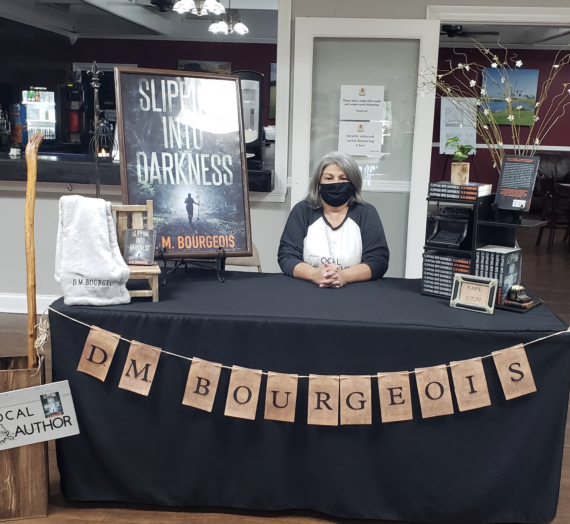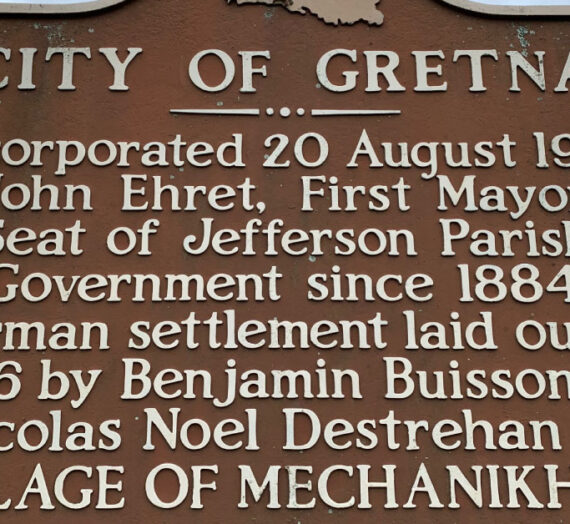To know Rev. Francis Carabello, is to love him! And love him, they do.
Catholic or not, locals love “Father Frank,” who was the longtime pastor of St. Joseph Church and Shrine in Gretna from 1980 until his retirement in 2009.
Beyond crediting him for the extensive restorations and improvements at historic St. Joseph’s, a landmark in the community, he is known for his good deeds in the community. He served as chaplain for Gretna Police Department, David Crockett Fire Company No. 1, Knights of Columbus Council 1905, and is still chaplain of the Italian-American Society.
On Sunday, May 9, he celebrated his 85th birthday and received well wishes from fans all over! After retiring, Fr. Frank remained here instead of moving back to Reading, Pennsylvania, where he was born in 1936.

“I remained here after retirement because Louisiana is better than anywhere else!” he said. “Gretna is like a little Reading. Similarities were that I was born three streets from the river and St. Joseph’s was six streets from the river. The streets there are named from the river, just like in Gretna, 1st, 2nd, 3rd Street and so on. I was raised in an Italian-populated neighborhood of about 30 row houses with various cultures, just like the mixture of cultures here. Houses here are not attached, but close together and there are similar extended families in the neighborhood.”
His birthday weekend started on Friday with lunch at Tony Mandina’s where he reminisced about his life before and during his seminary days.
Fr. Frank attended Holy Rosary Elementary in Reading and Central Catholic High. After graduation in 1954, he attended Wyomissing Polytech Institute, after which he was to study engineering at affiliated Penn State.
Two years later, he assisted a friend who was the Boy Scout leader of Fr. Frank’s much younger brothers. During a watershed moment in April, two things became apparent to the 20-year-old, one, he was not really suited to being an engineering student and, second, he had a calling and wanted to work with youth. He could become a diocese priest or join a religious order. After being educated by Salesian Sisters, it was a no-brainer that he picked the Salesian Order.
“I kept my desire to enter the clergy from my family. I was interviewed by a Salesian vocation director who told me to wait and pray. I decided in July and began my studies at Don Bosco College in New Jersey in 1956.
Upon graduating Magna Cum Laude in 1961, he taught for three years in Massachusetts, a requirement before continuing theological studies for the priesthood.
“I was so looking forward to studying theology in England, but the seminary was destroyed in a fire. Choices were to go to Spain, France, Germany or Italy. Italy was surely it! I didn’t speak Italian, but my Italian adventure began in the summer of 1964!
Fr. Frank was one of four “Brothers” who were introduced to each other in the Catskills at the famous Grossinger’s Resort in the late 1950s. It was like a camp for the boys who couldn’t go home in the summers. The other Brothers were from New Hampshire, New York and New Jersey. The Brother from New York turned out to be his lifelong friend, Rev. Sid Figlia who many years later was pastor of St. John Bosco Church in Woodmere.
On their last summer at Grossinger’s, the Brothers’ mission was to learn Italian. Brother Frank could understand a little bit, but a self-course in Italian with no teacher was tough.
“We were taken to a brand new terminal at Kennedy Airport, recently renamed for the late president. I was very anxious about flying for the first time. I said to Bro. Sid from Brooklyn, “I am really concerned because I can’t swim. What if we go down in the Atlantic?” He looked at me very strangely and simply answered, “Fuhgettaboutit!”
“We flew to Milan and traveled to St. Anselm Institute in Bollengo to study theology. We were picked up by a Salesian brother in a very tiny Italian car. Since I was the fattest, I sat in the front seat and the other three sat in the back seat with all of the suitcases. We were on a 3-lane highway from Milan to Turin. There was a right lane and left lane, each going one way. The middle lane was a passing lane that went both ways. At a certain point, Bro. Hector from NJ yelled, “Frank, tell the driver that there is a car coming at us!” I repeated in my best Italian. The indignant driver answered, “I have the right of way!” as he beat his chest!!! At the last minute the car cleared off.”
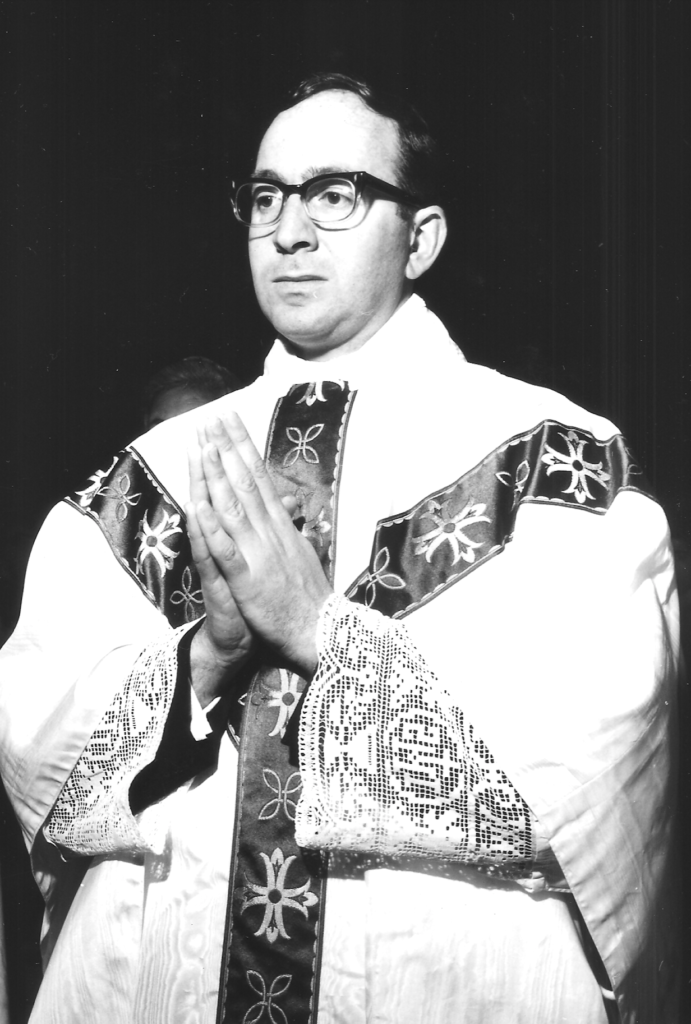
He spent two years studying at the Istituto San Tommaso in Messina, Sicily where he was ordained on Jan. 4, 1968.
Back in the U. S., he served as Prefect of Studies at Salesian High in Indiana while earning a master’s in education at Purdue University. He served the church in various places throughout his tenure, including locally in 1973-74 as a teacher and principal at Archbishop Shaw High School.
In 1980, when Rev. Francis Carabello arrived at St. Joseph’s, little did anyone know the legacy he would leave there.
“I said my first Mass for all the students at St. Joseph School on March 19, St. Joseph Day,” he said.
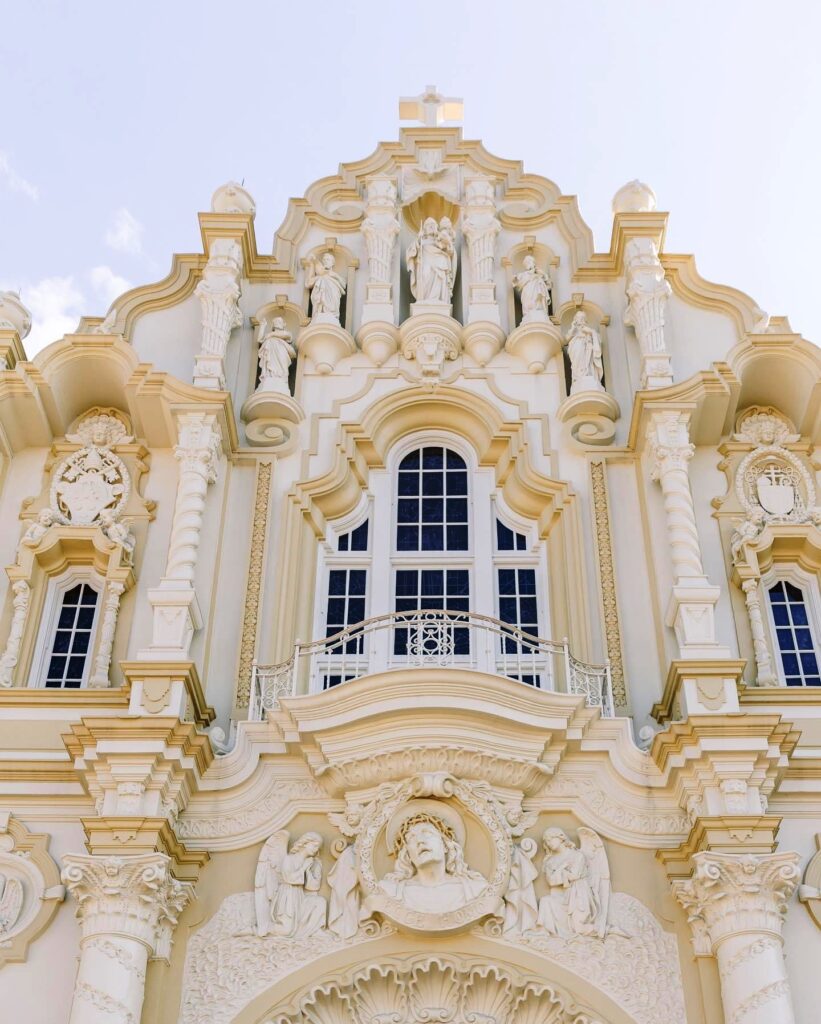
“Everett F. Gauthreaux, a parishioner, gave me a book of newspaper clippings regarding St. Joseph’s since 1900 that had been collected by Judge John Fleury. Fascinated with its historical importance, I used the information for future restoration projects. Upon retirement, I donated that 8” thick collection of material to the Gretna Historical Society archives.
When he arrived the interior of the church had been substantially changed from its original design. In 1970, to conform to changes brought about by Vatican Council II, a 1947 interior renovation was modernized in a way that conflicted with the Romanesque style of the interior.
“There was peeling paint from moisture and leaks and there were fissures in the exterior columns and walls. The original 1926 roof was leaking, felt paper beneath the terracotta tiles needed replacing. Atlas Tile Company, the original installers of the roof refurbished it in 1982.
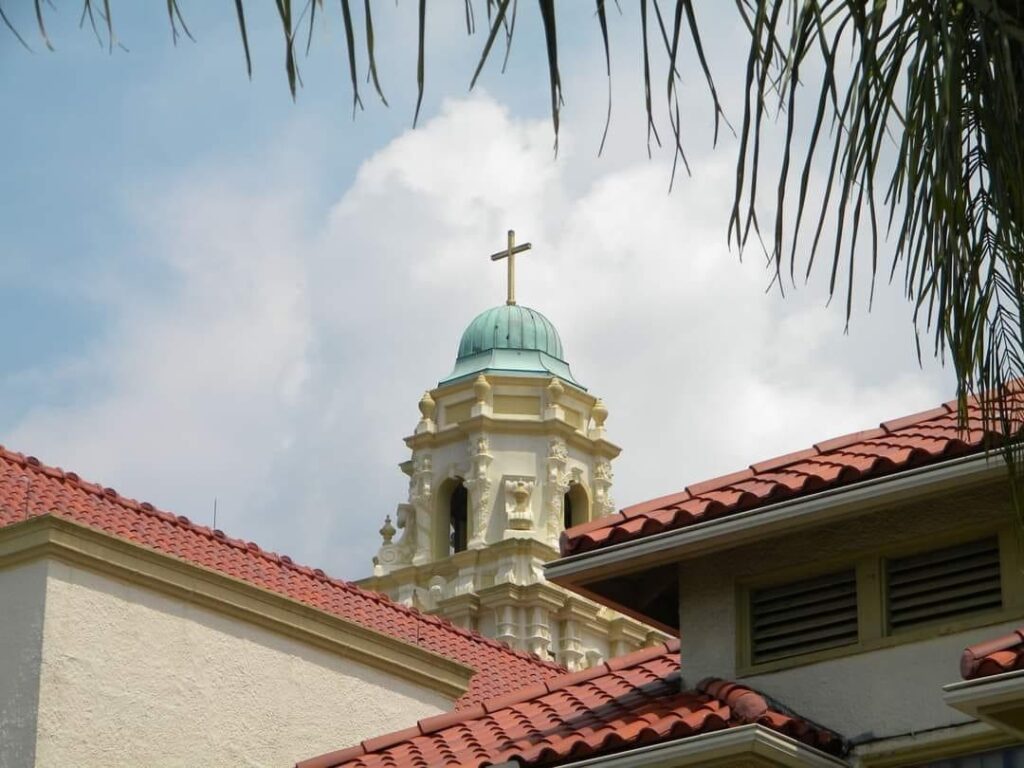
“With material from the Fleury collection and a booklet compiled by archdiocese historian Roger Boudeier with notes from an earlier pastor, Msg. Bernard Hammerstein, I set out to restore the church. There were times when I put those “engineering memories” from Wyomissing to good use!
“After a fire in the sacristy at Mardi Gras in 1947, the Conrad Schmidt Studios of Milwaukee were the liturgical designers and artisans of the fire renovation. While in Milwaukee in 1980, I met with Bernard Gruenke, the designer and supervisor of the 1947 renovation who still had those plans. I commissioned him to design a future restoration.
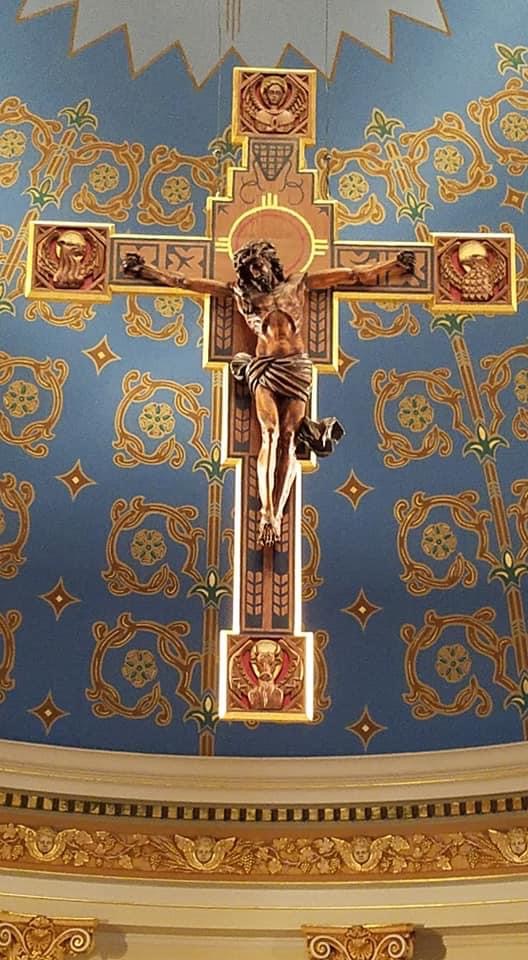
“The first major interior changes was to relocate the tabernacle and install a Holy Spirit stained glass window behind it. The choir loft plain glass window was replaced with a stained-glass depiction of the Resurrection. All the windows along the ceiling were replaced with stained glass based on the life of St. Joseph.
“By the 1990s, interior painting was completed, statues and angels were installed above the altar and new flooring was added. In 1998 a $100,000 organ was dedicated.
In 2000, the landscaped Holy Family Garden was inaugurated. In 2005, the circa 1920 auditorium and 1958 gymnasium were totally redone. In the sesquicentennial year, new pews, mosaics and a plaza was added.
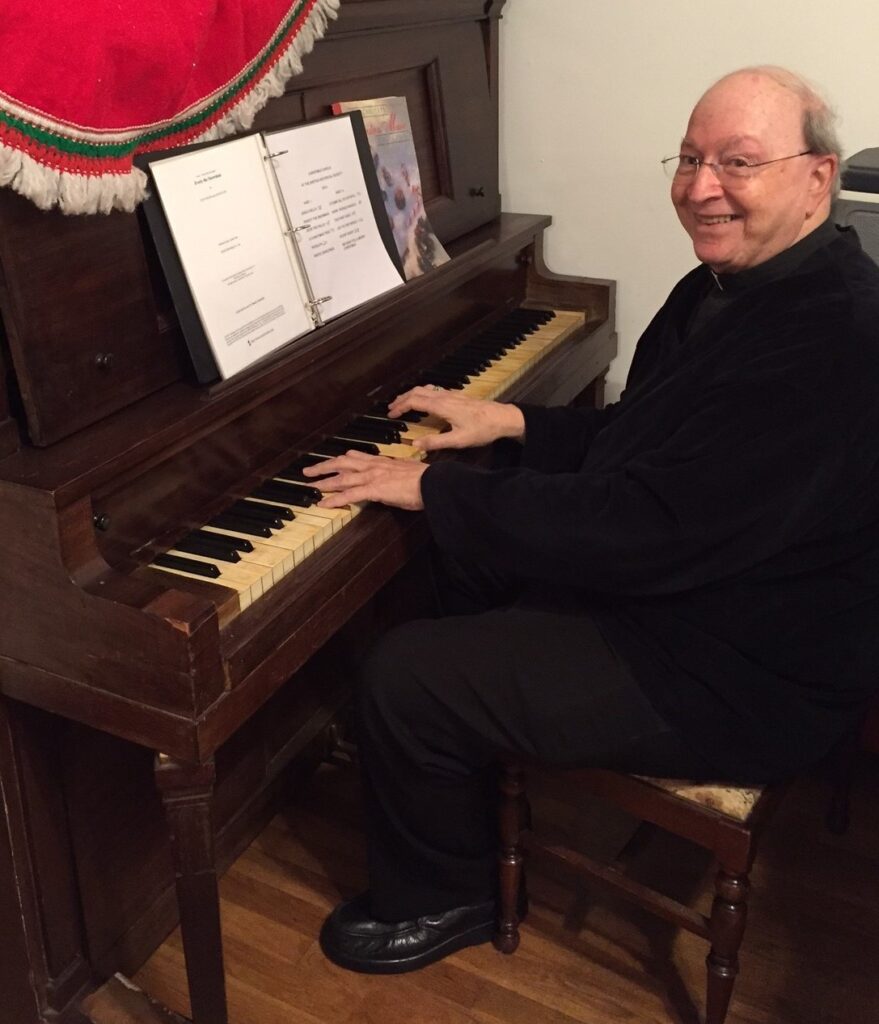
Through the efforts of Mary Grace Curry, A notable change at St. Joseph’s beyond restoration projects that happened during his tenure was the placement of the church on the National Register of Historic Places
Always a Salesian teacher at heart, in 2006 Fr. Frank opened the Mother’s Day Out program for two to four-year-olds that continues today.
For over a decade beyond retirement, Father Frank actively assisted church parishes on the West Bank. He isn’t as busy today, and is thankfully, paying more attention to his health. That sharp 85-year-old mind of his holds unlimited information about St. Joseph Parish and Gretna’s history.
Happy Birthday, Padre, and many, many more!
###


